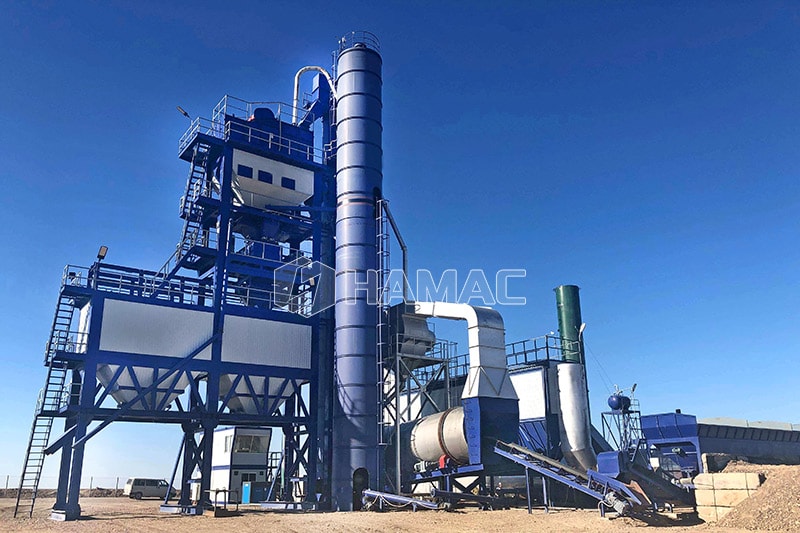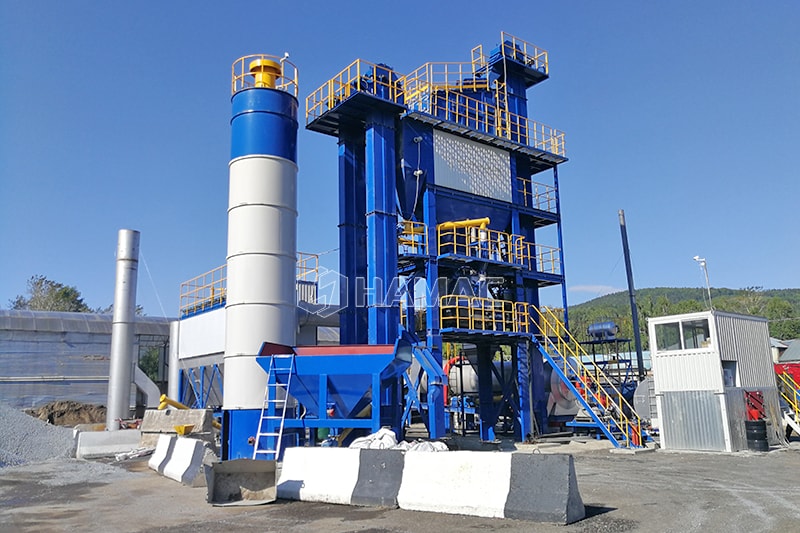Safety Operation Tips For Asphalt Mixing Plant
Last Updated: 2023-10-26
Safety Operation Tips For Asphalt Mixing Plant
Safety Operation Tips For Asphalt Mixing Plant: To ensure the secure and efficient operation of an asphalt mixing plant, operators must adhere to specific requirements and strict safety guidelines. These essential guidelines encompass professional training, the importance of proper attire, and continuous equipment monitoring during operation. Moreover, a proactive approach to safety includes routine maintenance, emergency response preparedness, and a thorough understanding of environmental regulations to minimize the environmental impact of asphalt production.

Professional Training
Operating an asphalt mixing plant requires specialized knowledge and skills. Before operators are allowed to work, they must undergo professional training, pass examinations, and obtain an induction certificate. This training covers various aspects of plant operation, safety protocols, and emergency procedures.
Proper Attire
Wearing the appropriate attire is a fundamental safety measure. Operators should don work caps, work clothes, and work shoes, along with any other required protective equipment. This attire is essential for personal safety during plant operation.
Before the Asphalt Mixing Plant Starts
Before starting the asphalt mixing plant, a series of checks and preparations must be made to ensure a smooth and safe production process.

Material and Equipment Checks
- Hopper and Storage: Examine the hoppers and storage bins to ensure they are free from any residual materials. All discharge doors should be closed.
- Equipment Condition: Inspect all parts of the plant to ensure they are in good condition. Check for loose transmission parts and secure connecting bolts.
- Lubrication and Fluid Levels: Verify that all lubrication points have sufficient oil and grease. Check the oil levels in reducers and ensure the pneumatic system has an adequate supply of oil.
- Site Cleanliness: Clean the site and ensure all protective devices are safe and in working order. Verify that fire prevention appliances are complete and effective.
- Material Parameters: Check the quantity, quality, specifications, and technical parameters of aggregates, mineral powder, bitumen, fuel, and water to meet production requirements.
- Heat Conduction System: Ensure the temperature of the heat conduction system complies with production requirements.
- Power Supply: Confirm that the voltage of the power supply meets equipment requirements and allows no more than a 5% deviation.
- Discharge Doors and Material Level: Ensure that discharge door switches are flexible, and material level indicators are functioning correctly.
- Air Compressor: Start the air compressor and ensure it reaches the required air pressure for operation.
- Electrical Components: Check the condition of switches, relays, motors, and cables. Ensure they are all in good working order.
- Instrument Panels and Metering: Confirm that display instrument panels are normal, metering devices are accurate, and the set gradation and oil-stone ratio meet project requirements.
- Bitumen Supply: Verify the bitumen supply system and the temperature of the bitumen. Start the asphalt pump to initiate circulation.
- Dust Removal System: Ensure the water pump of the dust removal system is in good condition, maintaining stable and uninterrupted water spraying.
Asphalt Mixing Plant in Operation
During the operation of the asphalt mixing plant, continuous monitoring is essential to maintain safety and production efficiency. The following steps are crucial for safe and efficient operation.
Equipment Start-Up
- Safety Precautions: Sound an alarm to notify personnel in the danger area before starting equipment. Operators should be vigilant and communicate closely with all personnel.
- Motor Start-Up: Begin by starting the motors for approximately three minutes, ensuring there are no abnormalities.
- Ignition: Ignite the burner while paying close attention to the ignition process. Adjust the damper of the induced draft fan and blower as needed.
- Feeding Control: Gradually increase the feeding amount as the temperature rises above 100°C, carefully adjusting the aggregate and powder amount to maintain the desired temperature.
- Control System Adjustment: Initially, set the control system to manual mode and produce 8 to 10 batches of asphalt mixture. After verifying equipment stability, switch to automatic mode.
- Continuous Monitoring: Operators should continuously monitor the operation and maintain contact with personnel in each position to ensure safety and equipment efficiency.
Emergency Procedures
- Emergency Stop Button: The emergency stop button should only be used in true emergencies, not for regular stops. Follow the correct start-up sequence after its use.
- Motor Overload: In the event of motor overload, identify the cause and address the issue before resuming asphalt production.
- Tool Placement: Tools and objects should not be left on equipment in operation to avoid accidents.
After Asphalt Mixing Plant Shutdown
Proper procedures should be followed when shutting down the asphalt mixing plant to ensure safety and equipment preservation.
Controlled Shutdown
- Cease Feeding: Stop feeding material during the last five to six batches of asphalt mixture production.
- Burner Shutdown: Turn off the flame after an additional 2 to 3 minutes and stop the pulverized coal machine and adjustable-speed motor.
- Cleaning and Maintenance: Clean the mixing tank and remove any residual asphalt mixture. Store any remaining materials from the hot aggregate storage bin.
- Motor Shutdown: Turn off each motor in the reverse order of start-up.
- Drying Drum Continuation: Allow the drying drum and feeding belt to continue running until the drying drum temperature falls below 90°C.
- Bitumen Handling: Halt bitumen supply when the burner is turned off. Use fire extinguishers as needed to extinguish any fires.
- Site Cleanup: Remove materials from belt conveyors and dust removal equipment, and clean the asphalt pipeline.
- Routine Inspection and Maintenance: After shutdown, conduct daily inspections and maintenance according to the manufacturer’s instructions.
These safety operation tips for asphalt mixing plants are essential for ensuring the safety and efficiency of the plant and protecting the well-being of the operators and the surrounding environment. Adhering to these guidelines and maintaining a culture of safety is vital for successful asphalt production.
TAG: asphalt mixing plant near meconcrete mixerConcrete Mixer with pumpconcrete mixer with pump and batcher
